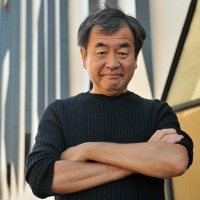Memory of project
We wanted to build a nursery school close to the ground. The building is wood-structured, single-story, and its exterior wall is covered with trees and plants. The floor is sloped to follow the landscape underneath, so that the structure can be further lowered, nearer to the ground. We wanted to assimilate the architecture with the earth, as if they have merged into each other. To fit the size and action of the children, we also designed the building to stand as low as we could.
Inside, there are lots of small niche-like “caves.” We are sure that the kids have found a place of their own.
Materials:
Finish of Exterior.- Roof: steel plate, Exterior Wall: wooden siding (partly nonflammable).
Openings.- wooden sash, aluminum sash.
Finish of Interior.- Nursery room, Play room: Wall: structural plywood, diatom earth; Ceiling: wood wool cement board, cypress strand board, calcium silicate board; Floor: wooden floor, cork floor.
Text.- Kengo Kuma & Associates
CREDITS.-
Main architect.- Kengo Kuma.
Team collaborators.- Ejiri Structural Engineers (structural design), Kankyo Engineering, Inc. (utilities, equipment), New House Co., Ltd. (construction), EGG Co., Ltd. (signage).
Client.- Social Welfare Organization CHUOUFUKUSHIKAI.
Date.- 07/2012 - 03/2013 (construction period), 12/2011 - 07/2012 (design period).
Surface.- 2640,09 m² (site area), 992.63 m² (built area).
Site.- 3-247-1 Taiyogaoka, Kanazawa-shi, Ishikawa Prefecture. Japan.






































